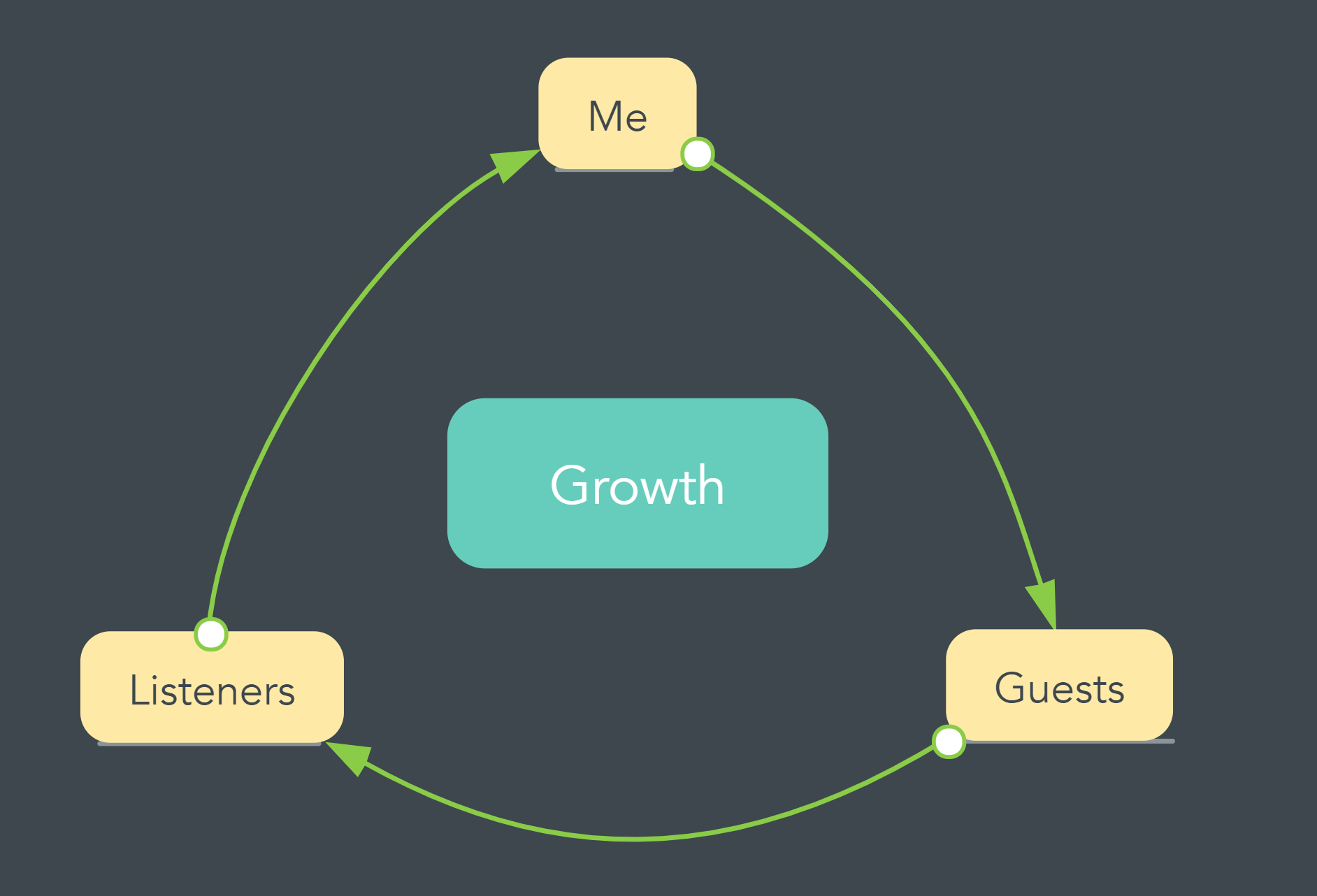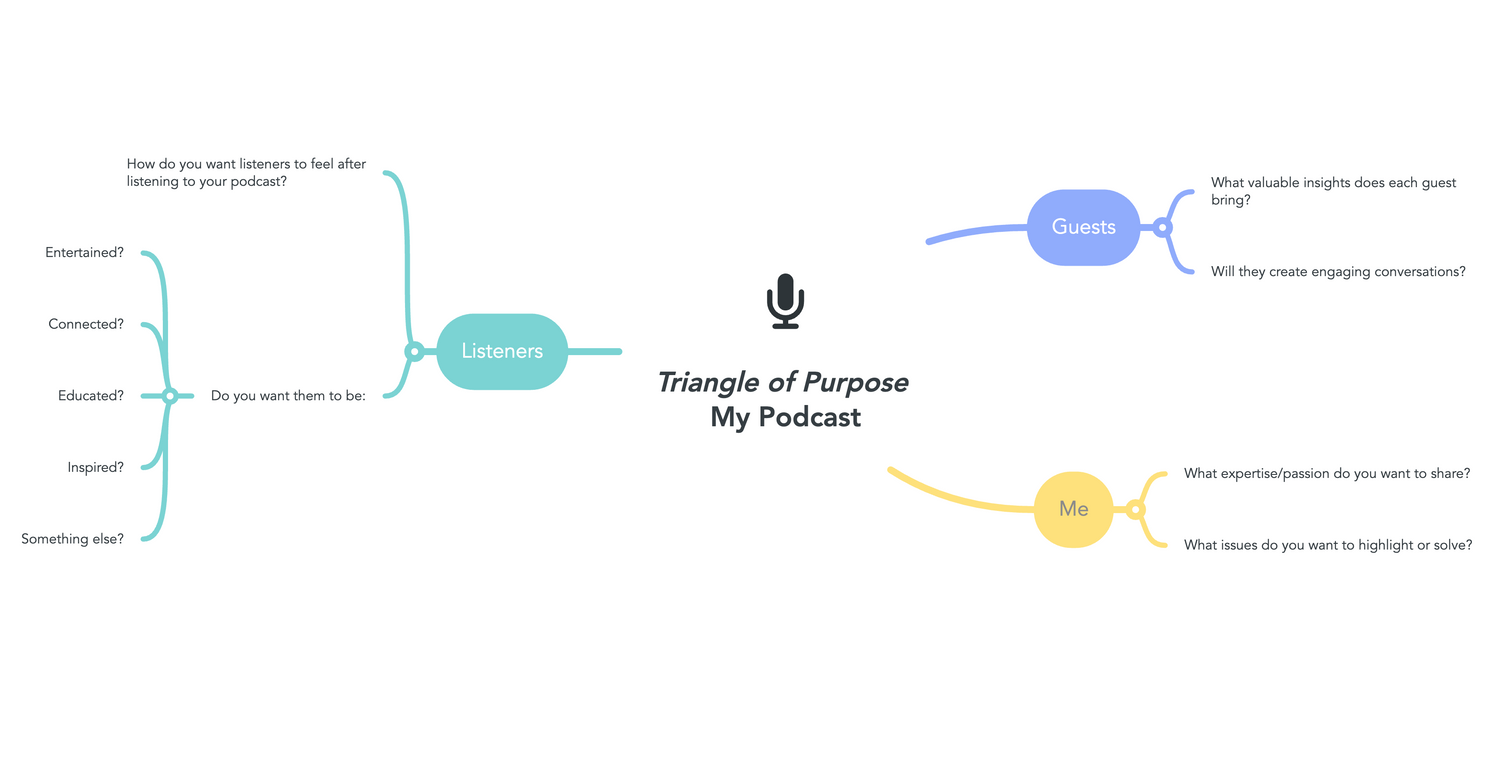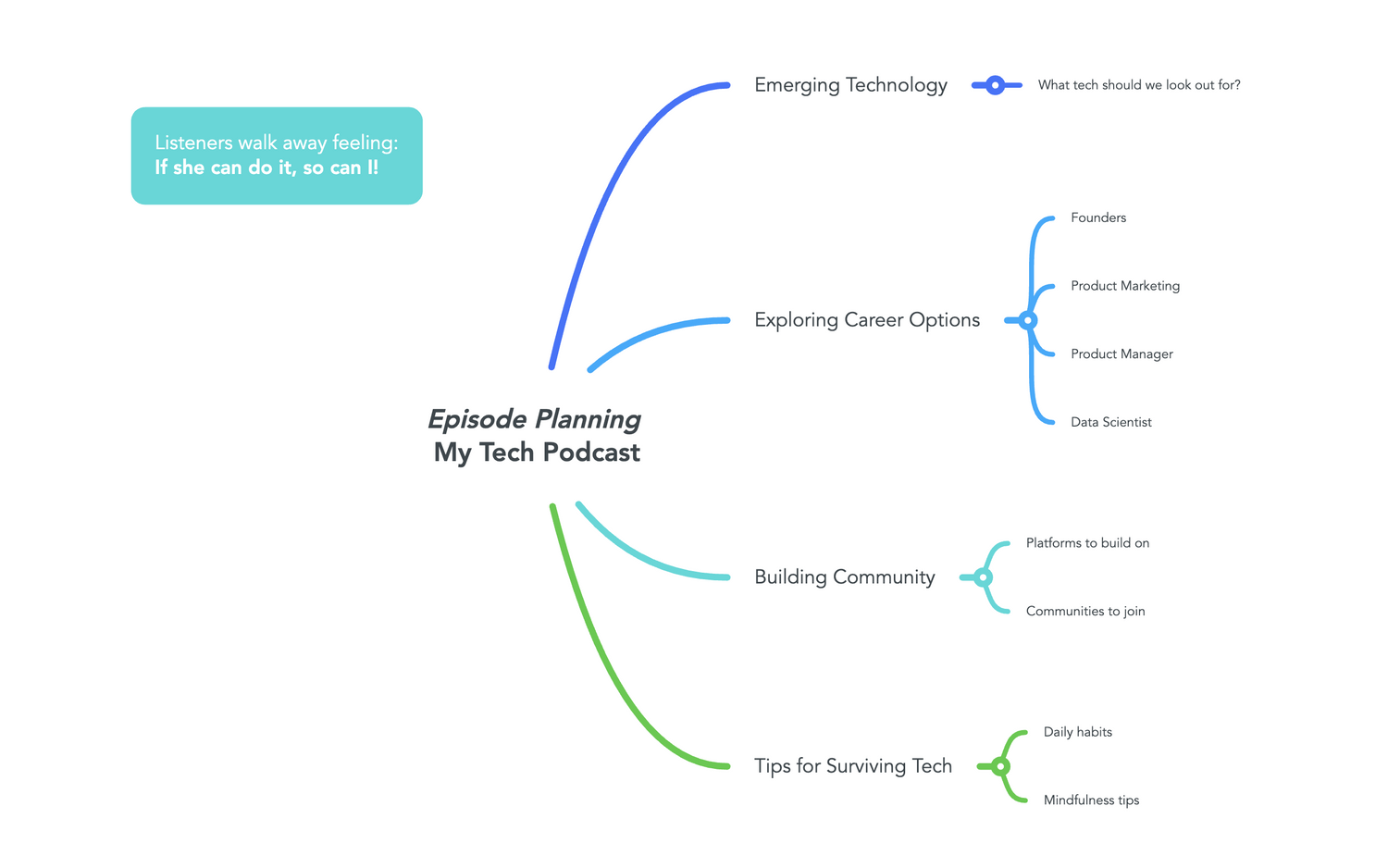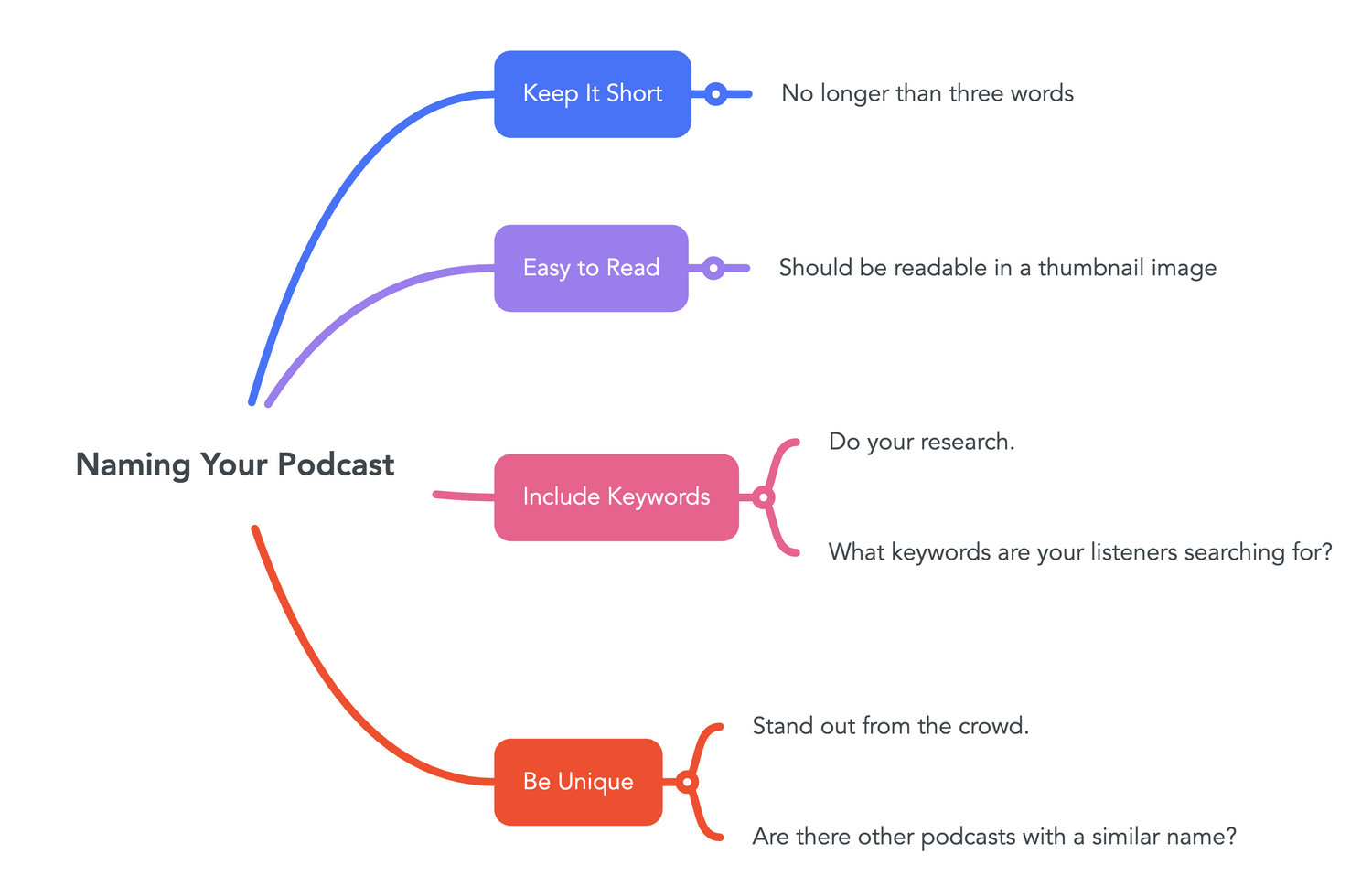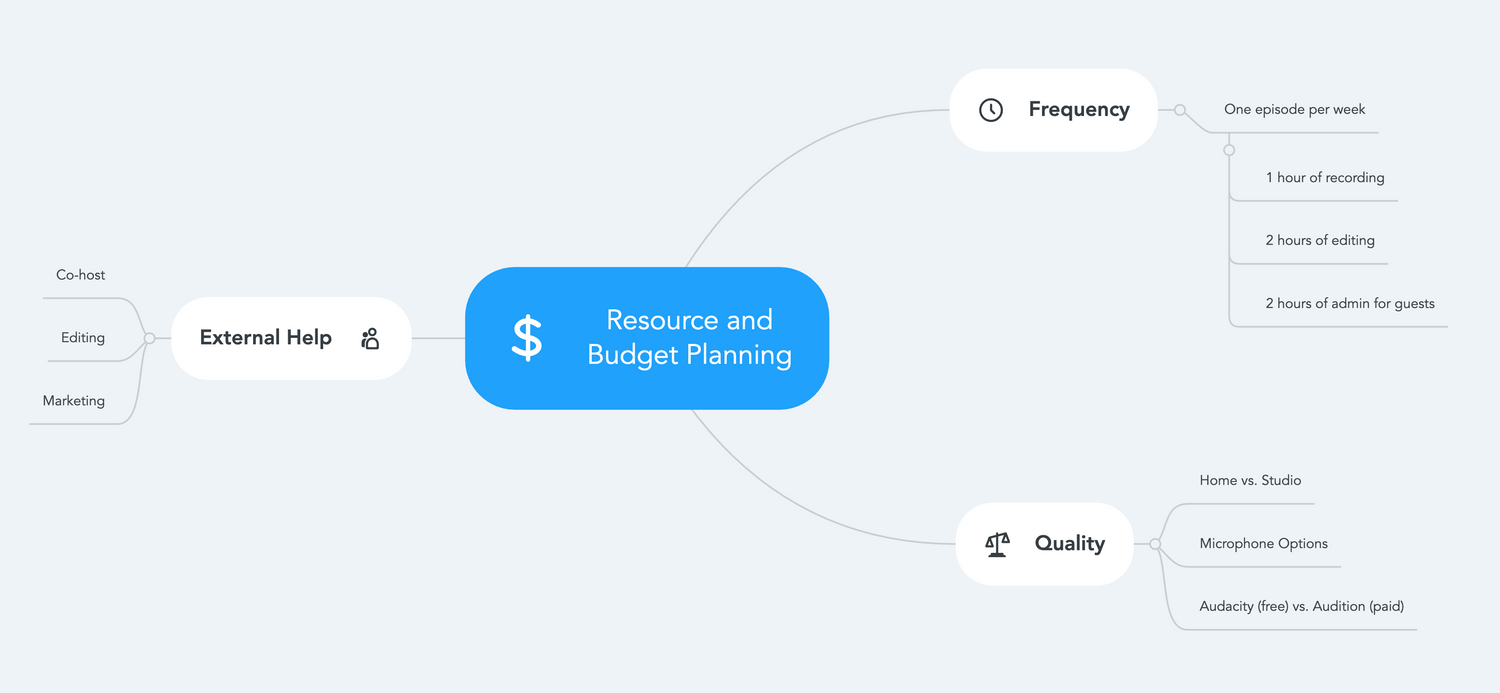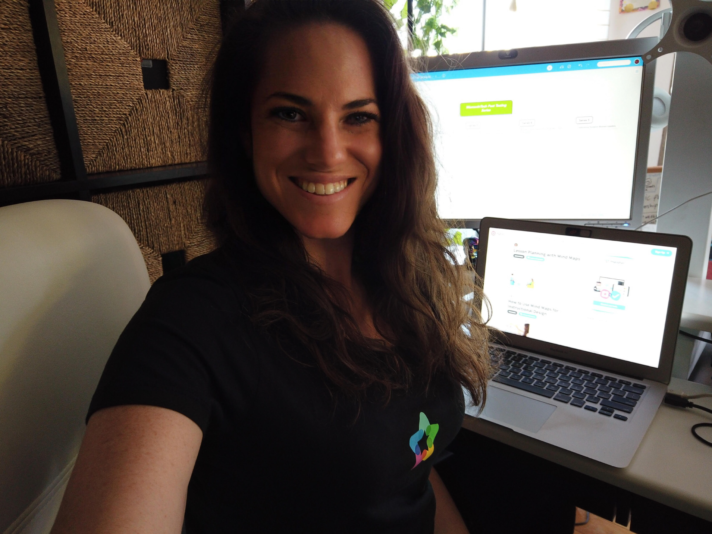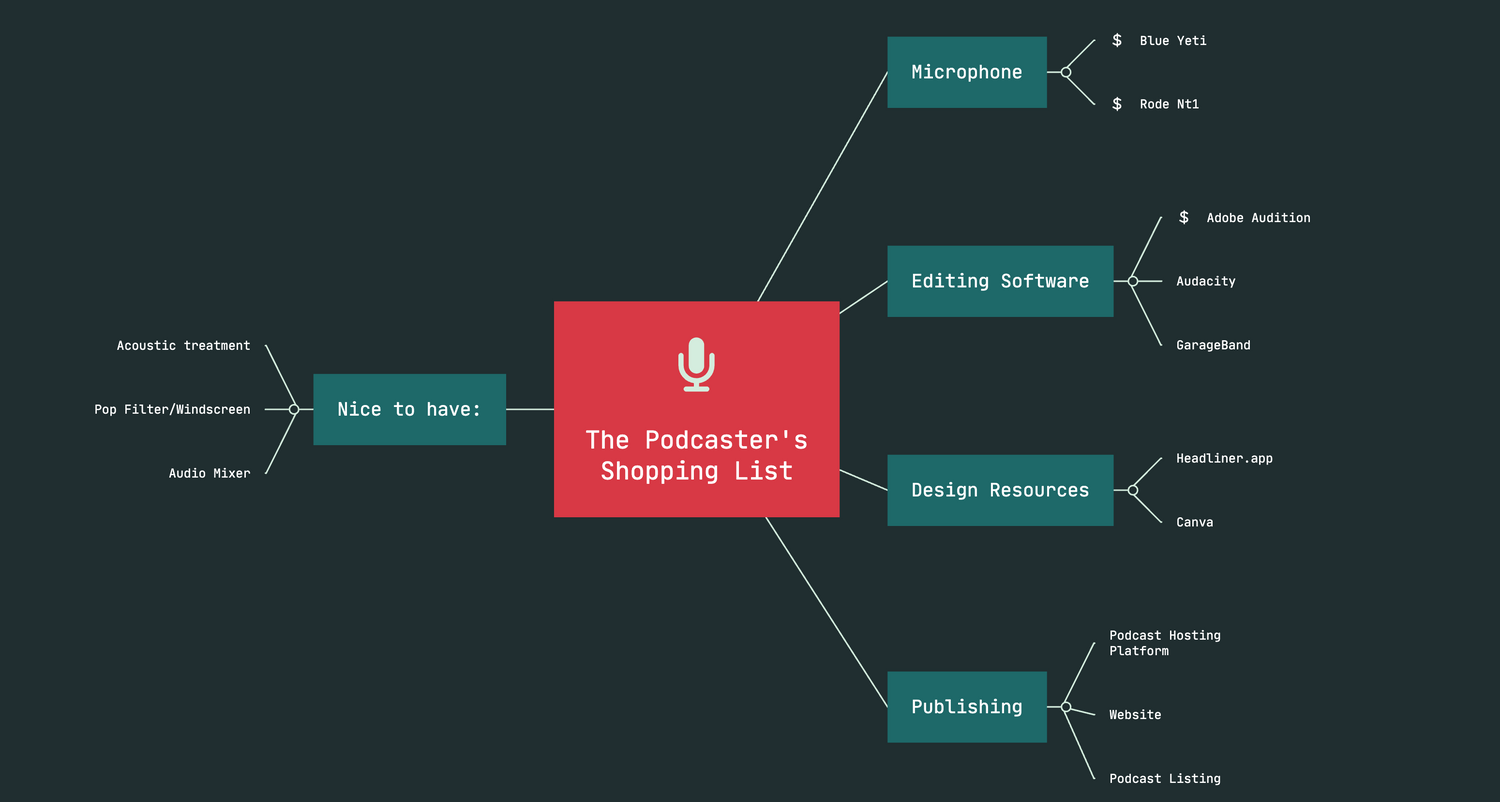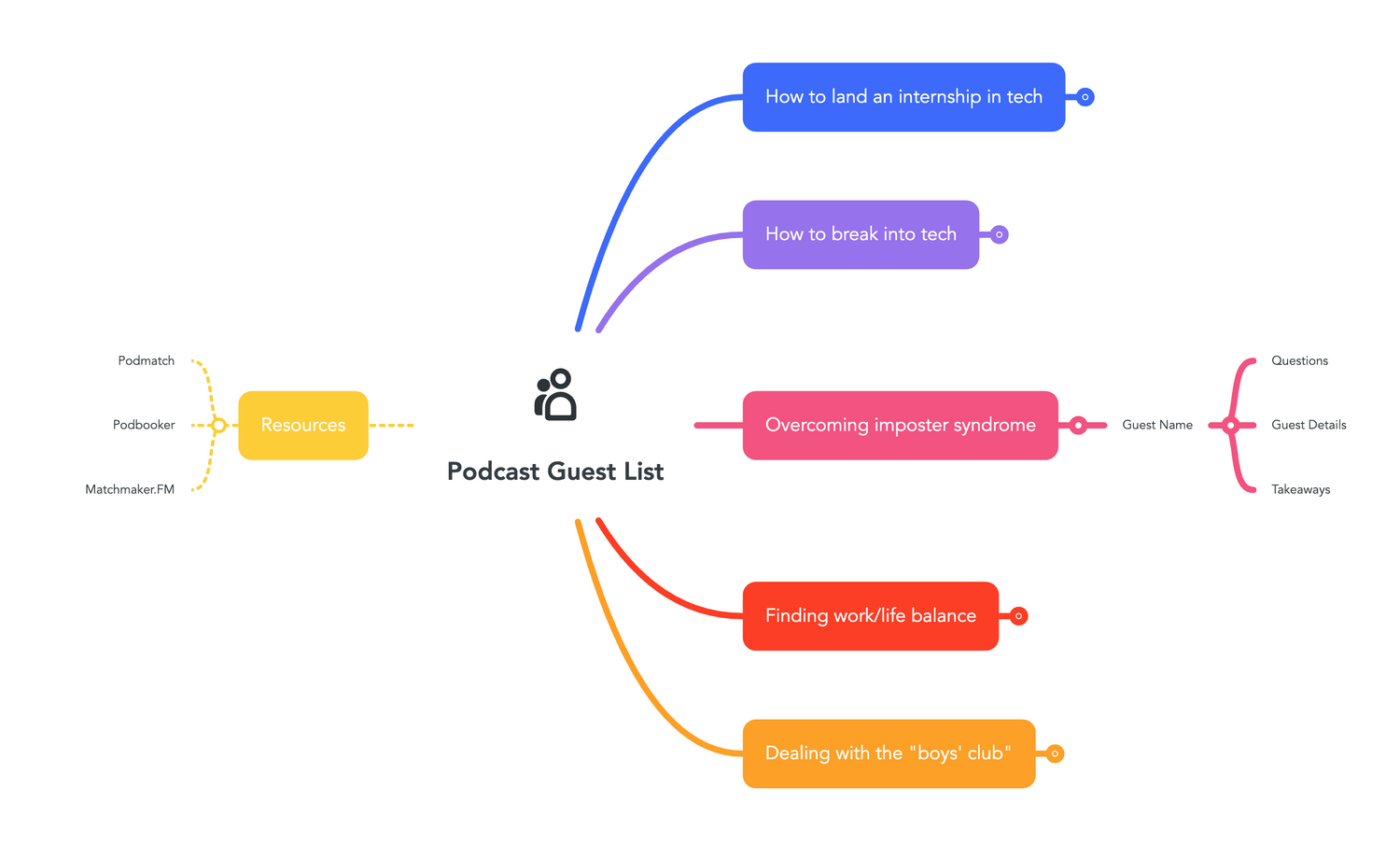Starting a podcast can be an intimidating process. However, I’ve found that mind mapping has helped me break up large-scale, almost overwhelming projects into smaller, attainable tasks, empowering me to build my successful podcasts one step at a time. Now, I’m excited to share everything I’ve learned with you! For this three-part blog series I’ve put together a step-by-step guide that will take you through the entire podcasting process: starting your podcast, creating content and promoting your episodes. You don’t need any experience or expertise — my magical podcasting mind maps make everything super simple, every step of the way.

First, a bit about me. My name is Espree Devora, also known as the Girl Who Gets It Done. I started podcasting in 2013 and quickly reached the top of the charts on Apple podcasts. My podcasts Women in Tech and WeAreLATech have been featured on the homepage of major podcast platforms including Apple Podcasts, Spotify and Castos, and I’ve even appeared in huge publications like Harper’s Bazaar and Entrepreneur Magazine.
I’m also passionate about mind mapping, and MindMeister has been my go-to tool for the job since 2012. This three-part blog post series will cover how to create a successful podcast using a system I created called The 3 P’s (Purpose. Process. Production), and the M&Ms: (Marketing and Monetization). With these methods, as well as the help of some beautiful mind maps, you’ll have your podcast on air in no time.
Step One: Purpose
Purpose is key to creating awesome podcast content. The more connected you are to your purpose, the more connected you’ll be to your future listeners too. Unfortunately, many new podcasters make a huge mistake when it comes to this first step, namely focusing on Production before Purpose. In short, rather than asking “what should my show be about?” many first-time broadcasters ask questions like “what mic should I get?”
Purpose is the first step toward creating a successful podcast, and defining it comes down to three very simple questions.
- Why is your podcast valuable to listeners?
- Why is creating a podcast important to you?
- Is the mission of your show aligned with your future guests’ missions?
By answering these questions, you can create the Triangle of Purpose.
Map #1: The Triangle of Purpose
My formula for the Triangle of Purpose is simple: Guests x You x Listeners = Growth.
All three aspects have to be addressed for your show to thrive. As it can often be difficult to think of these ideas off the top of your head and develop them, mind mapping is a great method to brainstorm and expand your ideas.
You can use mind maps in order to expand upon each of the corners of the triangle. Create a mind map with Podcast as the central topic and then Guests, Listeners and “Me” as the first-level ideas. When you’re doing this, think carefully about your reasons for starting the podcast and make sure you spend time building the foundation of that triangle.
- “Me”: Do you have a passion or an expertise that you want to share with others? What issues do you want to highlight or solve?
- Guests: Will your guests give valuable insight into the topics that you’re talking about? Will they help create engaging conversations that add value to listeners?
- Listeners: How do you want your listeners to feel after listening to your episodes? Do you want them to be entertained? Connected? Educated? Inspired?
Podcasting with a partner or co-host? Share your MindMeister mind map with them and brainstorm ideas collaboratively — you don’t need to be in the same room, or even on the same call!
Map #2 Brainstorm Episode Topics

To make it easier to create content, you should decide which topics will be covered in each podcast episode long in advance. Use the “Me” section of the Triangle of Purpose as a basis for your ideation process. With a solid foundation, thinking about ideas for episodes is easy, because you’ve already outlined the basics for your show.
The key thing to remember when generating ideas for episodes is to focus on the core purpose for the listener. Stay consistent and deliver topics that align with your original purpose. Mind mapping will help you do this in a way that is logical, scalable and easy for others to collaborate on.
In your episode planning mind map, create first-level ideas with the categories you’d like your podcast to cover. Then, from those ideas, create subtopics for each individual episode you wish to create. You could even use this map to suggest potential guests or go into greater detail on each subject area.
Use MindMeister’s voting, commenting and note functions in order to start and manage discussions about each idea on your mind map.
Map #3: Find Your Podcast Name
Choosing a name for your podcast is important. It’s the first thing potential listeners will see when they find you, and it’s what people will look for on social media, Google, or wherever they find inspiration for things to listen to. Think of something that represents what your content stands for and makes the purpose of your show obvious. For example, my podcast name is “Women in Tech”, which is a highly-searched term in Google and entirely self-explanatory.
Here are some top tips:
- Keep it short. Your name should be no more than three words long.
- Easy to read. Your name should be readable on a thumbnail so that potential listeners can absorb it when scrolling on their podcast player.
- Include keywords. These should describe what kind of content you’ll be creating so people can easily search for you.
- Be unique. Make sure there aren’t too many other podcasts with similar names already listed on the Apple Podcast directory.
In MindMeister, create a map to brainstorm potential podcast names. You might want to categorize these by keyword or different themes, but MindMeister allows you to reposition the topics later if you’d prefer to just brainstorm first.
Once you’ve found a few names you like, do some more research on them and add any information you find to the map. For example, you could Google the names to see if they already exist, and use Namechk to make sure the social handles are available — this is vital for you to really own your brand. Then, register the domain name. Grab the .com and the .fm (if it’s available and if within your budget).
Link to any external resources you find useful: domain registries, SEO analyses, or other insights.
Step Two: Process
Process is the method you use to manage your podcast: the important step between purpose, and production. Mind mapping is an equally important tool for aspiring podcasters at this stage of the podcast-starting process, because it allows you to really expand your ideas into more concrete action steps.
Map #4: Resource and Budget Planning
This is an important one. I strongly recommend mapping the resources and budget you will need at your disposal in advance: this will provide you with an overview of the time and money you’ll need to produce your show and stay consistent.
Resource planning is a process of asking yourself and answering questions, which is why your mind map should be set up in that style as well. I would recommend focusing on the following as your first-level ideas and expanding them to help you visualize and categorize your thoughts on each:
- Frequency. The more content you produce, the greater potential for monetization your podcast has. However, more content means more pressure and more costs incurred. How often do you want to publish new podcast episodes? Will you be able to achieve this output consistently? Create some different scenarios in your mind map with the cost involved with each model.
- Quality. The potential for production value is limitless, with videos, special effects, top-level equipment and more. The question is: what would you be happy with? Could you record your podcast at home, or would you need studio time? Consider linking this to your “equipment” mind map below.
- External help. It may not just be your own time you have to consider. Will you have a co-host? Do you plan to delegate editing responsibilities? Who will help with marketing? The more people you involve, the more complex your production process becomes, so use this opportunity to really go point-for-point through the responsibilities and delegate them wisely.
Remember, there are no bad ideas at this stage: you’re actively looking for ideas and inspiration, so try not to feel limited by practicalities until it comes to actually selecting the best part forward. When creating this map, just dream and have fun with it!
Color and style can help you organize your ideas more effectively. Choose a mind map theme or define color and style yourself.
Step Three: Production
Now you know what your podcast should achieve and the process you will follow to get there, it’s time to get serious about actually making it. Fortunately, you can also use mind mapping with MindMeister to help you focus on Production.
Map #5: The Podcaster’s Shopping List
You’ll need a fair bit of equipment to make your podcast, and there is endless choice when it comes to deciding which type of products you need and how much you should spend. I like to mind map the process in order to bring clarity to my thoughts, and MindMeister also offers several excellent features that can help you get the job done.
As a general tip, start small. Before getting an expensive microphone or fancy audio mixing board, wait until your podcast is taking off. You can always upgrade down the line when money allows for it. Your focus at this point should still be on purpose and process, not gear.
Create a mind map with the topics for the absolute basics you need. At a minimum, you’ll require a microphone, software for recording and editing audio, some design work, somewhere to upload and distribute your podcast, and some listings in podcast directories so listeners can find you.
From these categories, you can then create subtopics that detail a few options at different price points. You might also want to consider a further topic for “nice to haves”, products you don’t necessarily need but could bring value to your podcast. Once you’re done, keep your map for later — it’ll still be useful when it comes to upgrading your setup. You can also add any products you stumble upon in the meantime.
You can link to the various online shopping pages where the equipment can be found. Find out more about how to do this in this post.
Map #6: The Podcast Guest List
Your guests should be able to give valuable insight into the topics that you’re talking about in order to create engaging conversations. This will help create engaging content and ensure that listeners will find value in your interviews. A “Guest List” mind map will help you categorize your potential guests by their areas of interest and act as a directory for contact information.
For your map’s topics, start with some keywords related to what you want people to learn from your show, or even just a few ideas for different types of episodes. Then, use podcast guest resources such as podmatch, podbooker and matchmaker.fm to find intriguing candidates. Add these to your mind map, then insert contact information and any other relevant information about the potential guests you find. This will help you keep all potential invitees organized and available at a glance, saving you time searching for new ones.
Try MindMeister’s calendar integration to streamline your schedule talking to potential guests.
Moving Forward
I hope the mind maps listed in this post will help you conceptualize your podcast and propel you toward getting your podcast on air. In upcoming posts, I’ll be explaining how to use mind mapping for other important parts of the podcast process, including creating podcast social content and promoting your episodes, and introducing “the M&Ms” of marketing and monetization.
In the meantime, if you have any questions, feel free to ask me on Twitter. Don’t forget to follow MindMeister to superpower your mind mapping too. Stay tuned for more!



